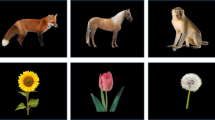Abstract
In this research, the interaction between electroencephalogram (EEG) and, a cardiac parameter, photoplethysmogram (PPG), using connectivity measures to emphasize the importance of autonomic nervous system over the central nervous system during a deception is investigated. In this survey, connectivity analysis was applied, since it can provide information flow of brain regions; moreover, lying and truth appear to be cohered with the flow of information in the brain. Initially, a new wavelet-based approach for EEG/PPG effective connectivity fusion was introduced; then, it was validated for 41 subjects. For each subject, after extracting specific wavelet component of EEG and PPG signals, an effective connectivity network was generated by a generalized partial direct coherence and a direct directed transfer function. The results showed that grand average connectivity patterns were different in some regions for guilty and innocent subjects. The classification results demonstrated that lying could be discriminated from truth with the average accuracy of 84.14% by the leave-one-subject-out method. The present results contribute new information about coupling between EEG and PPG signals.









Similar content being viewed by others
Notes
Guilty Knowledge Test.
Concealed Information Test.
References
Matte, J.: Forensic Psychophysiology Using the Polygraph: Scientific Truth Verification, Lie Detection (1996)
Shi, Y., Nguyen, M.H., Blitz, P., French, B., Fisk, S., De la Torre, F., Smailagic, A., Siewiorek, D.P., al’ Absi, M., Ertin, E., Kamarck, T., Kumar, S.: Personalized stress detection from physiological measurements. In: International Symposium on Quality of Life Technology (2010)
Karthikeyan, P., Murugappan, M., Yaacob, S.: A review on stress inducement stimuli for assessing human stress using physiological signals. In: 2011 IEEE 7th International Colloquium on Signal Processing and its Applications (CSPA). IEEE (2011)
Rajoub, B.A., et al.: Thermal facial analysis for deception detection. IEEE Trans. Inf. Forensics Secur. 9(6), 1015–1023 (2014). https://doi.org/10.1109/tifs.2014.2317309
Warmelink, L., Vrij, A., Mann, S., Leal, S., Forrester, D., Fisher, R.P.: Thermal imaging as a lie detection tool at airports. Law Hum. Behav. 35(1), 40–48 (2011)
Abootalebi, V., Moradi, M.H., Khalilzadeh, M.A.: A new approach for EEG feature extraction in P300-based lie detection. Comput. Methods Progr. Biomed. 94, 48–57 (2009). https://doi.org/10.1016/j.cmpb.2008.10.001
Mehrnam, A.H., Nasrabadi, A.M., et al.: A new approach to analyze data from EEG-based concealed face recognition system. Int. J. Psychophysiol. 116, 1–8 (2017). https://doi.org/10.1016/j.ijpsycho.2017.02.005
Ghodousi, M., Nasrabadi, A.M., et al.: Combination of event related potentials and peripheral signals in order to improve the accuracy of the lie detection systems. JSDP 12(2), 73–86 (2015)
Raskin, D.C., Honts, C.R., Kircher, J.C. (eds.): Credibility Assessment. Scientific Research and Applications. Academic Press, Cambridge (2014)
Davatzikos, C., Ruparel, K., Fan, Y., Shen, D.G., Acharyya, M., Loughead, J.W., et al.: Classifying spatial patterns of brain activity with machine learning methods: application to lie detection. Neuroimage 28, 663–668 (2005)
Gao, J., et al.: Exploring time and frequency dependent functional connectivity and brain networks during deception with single-trial event-related potentials. Sci. Rep. 6, 37065 (2016). https://doi.org/10.1038/srep37065
Wang, H., Chang, W., Zhang, C.: Functional brain network and multichannel analysis for the P300-based Brain Computer Interface system of lying detection. Expert Syst. Appl. (2016). https://doi.org/10.1016/j.eswa.2016.01.024
Wang, Y., Ng, W.C., Ng, K.S., Yu, K., Wu, T., Li, X.: An Electroencephalography network and connectivity analysis for deception in instructed lying tasks. PLoS ONE 10(2), e0116522 (2015). https://doi.org/10.1371/journal.pone.0116522
Daneshi Kohan, M, et al.: Interview based connectivity analysis of EEG in order to detect deception. Med. Hypotheses 136 (2020). https://doi.org/10.1016/j.mehy.2019.109517
Passaro, A.D., et al.: A novel method linking neural connectivity to behavioral fluctuations: behavior-regressed connectivity. J. Neurosci. Methods 279, 60–71 (2017)
Chang, C., et al.: Association between heart rate variability and fluctuations in resting-state functional connectivity. Neuroimage 68, 93–104 (2013). https://doi.org/10.1016/j.neuroimage.2012.11.038
Jurysta, F., et al.: A study of the dynamic interactions between sleep EEG and heart rate variability in healthy young men. Clin. Neurophysiol. 114, 2146–2155 (2003)
Kim, D.-K., et al.: Dynamic correlations between heart and brain rhythm during autogenic meditation. Front. Hum. Neurosci. 7, 414 (2013). https://doi.org/10.3389/fnhum.2013.00414
Piper, D., et al.: Time-variant coherence between heart rate variability and EEG activity in epileptic patients: an advanced coupling analysis between physiological networks. New J. Phys. 16, 115012 (2014). https://doi.org/10.1088/1367-2630/16/11/115012
Mazzillo, M., et al.: Characterization of SiPMs with NIR long-pass Interferential and plastic filters. IEEE Photonics J. 10(3), 1–12 (2018). https://doi.org/10.1109/jphot.2018.2834738
Rundo, F., et al.: A nonlinear pattern recognition Pipeline for PPG/ECG medical assessments. In: Springer Nature, Proceedings of the Fourth National Conference on Sensors, 21–23 February 2018, Catania, Italy. http://doi.org/10.1007/978-3-030-04324-7_57 (2018)
Vincenzo, et al.: PPG/ECG multisite Combo system based on SiPM Technology. Sensors 353–360, 2017 (2018). https://doi.org/10.1007/978-3-030-04324-7_44
Anastasova, K., et al.: Differences in the quality of the photoplethysmograph signal in subjects with and without nail polish. Eur. Polygraph 12(1–43), 7–17 (2018). https://doi.org/10.2478/ep-2018-0001
Mullen, T.R., Kothe, C.A., Chi, Y.M., Ojeda, A., Kerth, T., Makeig, S., Jung, T.P., Cauwenberghs, G.: Real-time neuroimaging and cognitive monitoring using wearable dry EEG. IEEE Trans. Biomed. Eng. 62(11), 2553–2567 (2015). https://doi.org/10.1109/tbme.2015.2481482
Volz, K.G., Schubotz, R.I., Yves von Cramon, D.: Decision making and the frontal lobes. Curr. Opin. Neurol. 19(4), 401–406 (2006). https://doi.org/10.1097/01.wco.0000236621.83872.71
Collins, A., Koechlin, E.: Reasoning, learning, and creativity: frontal lobe function and human decision-making. PLOS Biol. 10(3), e1001293 (2012). https://doi.org/10.1371/journal.pbio.1001293
Peplow, M.: Brain imaging could spot liars. Nature (2004). https://doi.org/10.1038/news041129-1
Langleben, D.D., et al.: Brain activity during simulated deception: an event-related functional magnetic resonance study. NeuroImage 15(3), 727–732 (2002)
Acknowledgements
I would like to acknowledge National Brain Mapping Laboratory of Iran to provide us with their standard EEG recording system and helping us to collect data.
Author information
Authors and Affiliations
Corresponding author
Additional information
Publisher's Note
Springer Nature remains neutral with regard to jurisdictional claims in published maps and institutional affiliations.
Rights and permissions
About this article
Cite this article
Daneshi Kohan, M., Motie Nasrabadi, A., Shamsollahi, M.B. et al. EEG/PPG effective connectivity fusion for analyzing deception in interview. SIViP 14, 907–914 (2020). https://doi.org/10.1007/s11760-019-01622-1
Received:
Revised:
Accepted:
Published:
Issue Date:
DOI: https://doi.org/10.1007/s11760-019-01622-1




